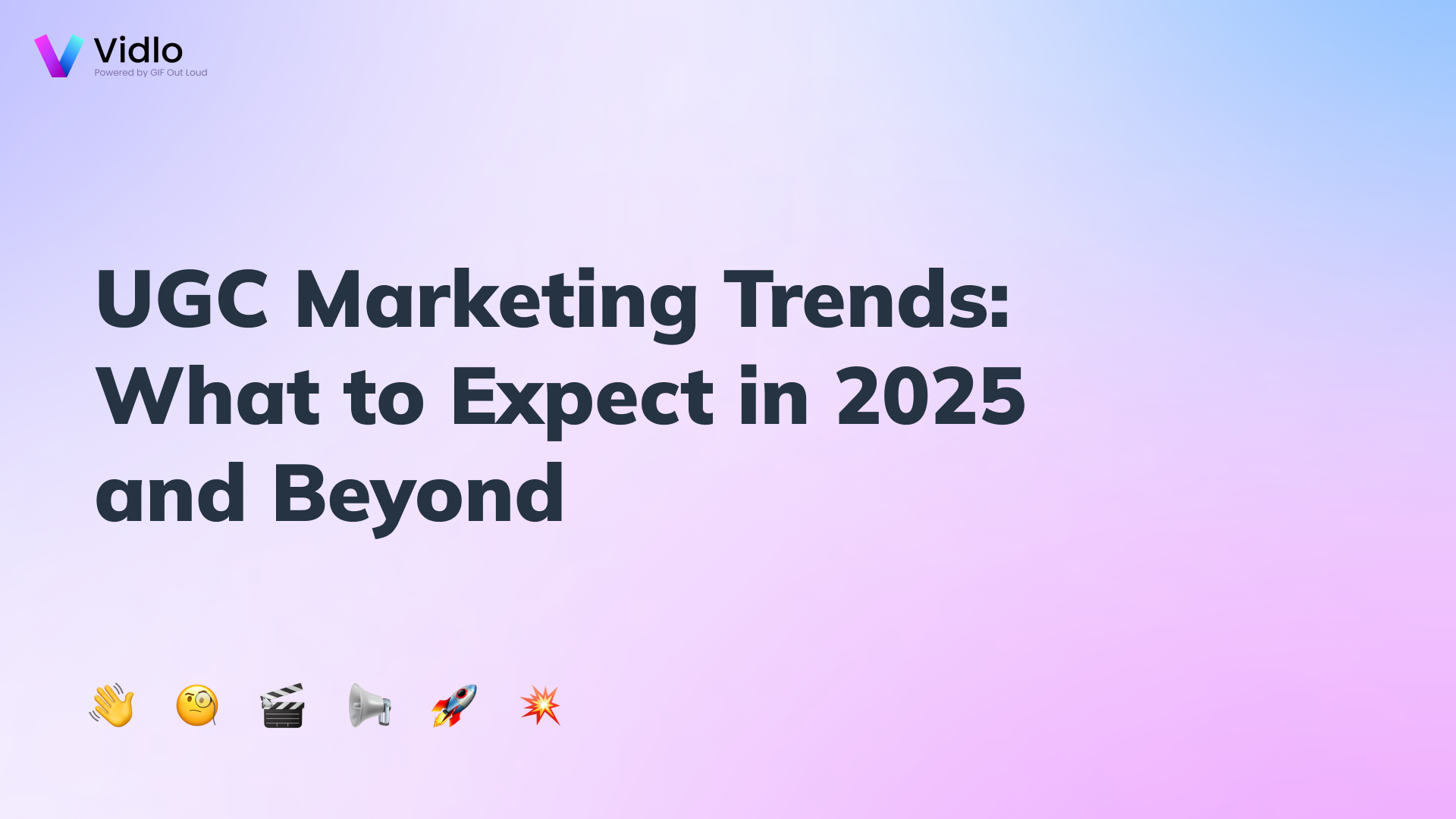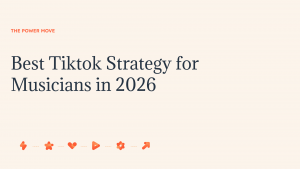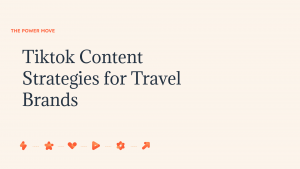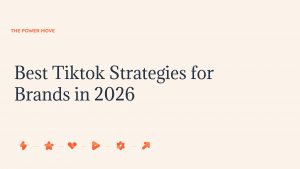In the last two years, User-Generated Content (UGC) has evolved from a nice-to-have marketing tactic into a core growth lever for brands of every size. Algorithms now reward authentic, high-signal content that drives genuine engagement, while modern buyers demand real proof from real people before they trust a brand.
At the same time, production cycles that once took weeks now happen in hours—thanks to creators, customers, and community-driven storytelling. This shift has made a strong UGC strategy not just valuable, but essential. Brands that systemize how they source, curate, and amplify UGC are outperforming competitors who still rely on polished but impersonal advertising.
This article explores what UGC marketing really is, why it matters, and the key UGC marketing trends shaping the future—complete with practical examples you can apply today to strengthen your own content strategy and brand growth.
What Is UGC Marketing and Why It Matters Now
UGC marketing is the practice of incorporating customer-created content—such as photos, videos, testimonials, and reviews—into your marketing mix across social media, websites, email campaigns, and even paid ads. Rather than relying on polished brand content, it amplifies the authentic voices of real customers, building trust and credibility at scale.
In fact, 81% of eCommerce marketers agree that visual user-generated content (UGC) is more impactful in reaching customers than professionally shot photos or influencer content (Nosto). This reinforces why brands are shifting their focus toward authentic visuals and community-led storytelling.
Within this context, video marketing for eCommerce has become a major growth driver. Short, genuine clips showcasing real experiences—like unboxings, reviews, or product demos—outperform traditional ads because they mirror how real people interact with products. For modern brands, combining a strong UGC strategy with video-first UGC storytelling isn’t optional anymore—it’s the foundation of sustainable digital growth.
A well-defined User-Generated Content strategy turns random reposts into a repeatable system. It helps brands increase conversion lift, speed up content velocity, and reduce production costs—all while deepening community engagement. The best-performing brands don’t treat UGC as an afterthought; they design clear pipelines for sourcing, approving, and repurposing creator content across channels.
In today’s marketing landscape, video UGC has become the centerpiece of this evolution. Short-form formats like TikToks, Reels, and YouTube Shorts dominate discovery, while long-form storytelling and testimonial videos drive purchase decisions. Understanding video content types—from unboxing clips and product demos to before-and-after stories—and aligning them with your brand goals is key to standing out.
As video marketing trends continue to favor authenticity and relatability over production gloss, the future belongs to brands that empower their customers to become creators. UGC isn’t just cheaper; it’s more believable, more scalable, and far more persuasive than traditional campaigns.
Core benefits of a modern UGC strategy include:
Credibility and social proof at scale through reviews, testimonials, and real usage
Higher watch-through and click-through rates compared to polished-only brand ads
Faster asset creation and diverse platform-native content
Lower production cost per asset with greater testing volume
Repurposability across organic, paid, product pages, and email campaigns
With the why established, here is what to expect next for teams planning their 2025 roadmaps.
UGC Marketing Trends and Predictions for 2025–2026
These UGC marketing trends are more than just buzzwords — they’re actionable strategies shaping how brands plan, create, and scale content. Over the next 12 to 18 months, they’ll define how marketers approach authenticity, storytelling, and community engagement. For brands focused on creating viral video marketing campaigns, these trends serve as a practical roadmap: a way to combine user voices, platform data, and creative agility to drive real, sustained visibility.
Preview of the trends:
Short-form video UGC dominates discovery and conversion
Shoppable UGC and social commerce integrations mature
AI-assisted UGC sourcing, editing, and moderation go mainstream
Creator licensing and rights standardization reduce risk
Community-powered co-creation informs product and content
Measurement and attribution tie UGC to revenue at SKU and campaign level
Localized, retail-specific UGC rises within cities and micro-communities
B2B and Employee-Generated Content expand UGC beyond consumer use
Short-Form Video UGC Dominates
Short-form UGC video momentum in 2025 continues to accelerate, with 10–45 second native clips on TikTok, Reels, and YouTube Shorts leading both discovery and conversion. These authentic, rapid-fire formats now sit at the center of the top UGC advertising trends this year, outperforming polished brand assets thanks to their credibility and platform-native feel.
How to apply:
- Capture micro-stories that move quickly from problem to solution to outcome.
- Encourage before-and-after sequences, routine showcases, or day-in-the-life snippets.
- Use Vidlo’s UGC video templates and automated prompts to scale short-form content while keeping framing consistent across creators.
Example:
A skincare brand collects 20 short-form customer clips showing routines and two-week results, then selects the top three videos as paid ads—driving significantly higher engagement and ROAS.
Shoppable UGC and Social Commerce Integrations
Shoppable UGC is becoming one of the most impactful user-generated content trends for upcoming years. Product tags, Shop tabs, and PDP-embedded videos/photos now shorten the buyer journey dramatically. As platforms standardize commerce features, brands relying on UGC-driven shopping experiences gain a measurable advantage. This shift also ties closely to emerging UGC moderation trends, ensuring that shoppable content remains compliant, high-quality, and conversion-focused.
How to apply:
Pair UGC with product tags and embed directly on PDPs
Test user journeys from UGC to PDP versus UGC to category pages
Example: An apparel retailer adds a UGC carousel with size notes on PDPs, leading to higher add-to-cart rates for certain products.
AI-Assisted UGC Sourcing, Editing, and Moderation
AI-powered workflows are rapidly reshaping the future of creator content. With AI marketing booming to $47.32B in 2025 and projected to exceed $107B by 2028, brands are increasingly relying on automated systems to find, filter, and improve UGC at scale. Modern tools now identify relevant clips, auto-edit vertical formats, add captions, analyze sentiment, and flag compliance risks. These capabilities are becoming central to the leading UGC moderation trends and remain one of the most influential user-generated content trends for upcoming years.
How to apply:
Use AI to shortlist creators and auto-trim clips for platform specs
Automate compliance checks for claims, IP, and sensitive content
Example: A food brand ingests 500 fan videos. AI narrows them down to 30 on-brief clips, and the team publishes 8 within 48 hours.
Creator Licensing and Rights Standardization
What’s happening: As UGC becomes a core acquisition channel, licensing misuse has become one of the costliest problems for brands. This is why companies are shifting toward standardized contracts, clear usage windows, and centralized rights management systems. Among the most important UGC marketing updates of 2025 is the move toward transparent creator agreements—covering paid ads, whitelisting, website usage, and email campaigns. Rights clarity is now directly tied to performance stability, especially as platforms tighten enforcement policies.
How to apply:
Secure explicit usage rights for organic, paid, web, and email
Track creator IDs, license terms, and expiry dates
Example: An electronics brand negotiates six-month paid usage with whitelisting to avoid takedowns and maintain return on ad spend.
Community-Powered Co-Creation
What’s happening: One of the most defining UGC marketing updates of 2025 is the shift from passive reposting to active, community-driven collaboration. Instead of simply waiting for customers to share content, brands now co-create through product challenges, beta test groups, interactive prompts, and creator-style feedback loops. This evolution is emerging as a key pillar in the user-generated content trends for upcoming years, where communities influence not only marketing—but product development, messaging, and creative direction.
How to apply:
Run idea sprints or challenges and highlight winners
Turn superfans into creator councils for recurring campaigns
Example: A beverage startup asks customers to submit flavor ideas. The top five receive prototype kits and create reveal videos before launch.
Measurement and Attribution Get Specific
What’s happening: UGC is now tied directly to funnel stages with rigorous tracking.
How to apply:
Tag every placement and track click-through, order value, and repeat purchase
Use media mix models or geo-split tests to measure awareness lift
Example: A furniture brand links UGC room tours to “shop the look” collections. Average order value increases 18 percent for tagged sessions.
Localized, Retail-Specific UGC
What’s happening: Store-level and community-level content boosts conversions tied to local intent.
How to apply:
Prompt customers for geo-tagged clips and neighborhood-specific content
Build store pages with embedded reels or stories from actual shoppers
Example: A boutique chain curates weekly customer videos per location, which boosts store traffic on featured days.
B2B and Employee-Generated Content Scale Trust
What’s happening: UGC is no longer limited to consumer brands. Testimonial clips, onboarding explainers, and employee walkthroughs are creating impact in B2B.
How to apply:
Activate employees as subject matter creators with standardized prompts
Combine customer testimonials with employee explainers in retargeting campaigns
Example: A SaaS company publishes 30 second engineer explainers paired with customer testimonials, increasing demo requests from retargeted audiences.
The evolution of UGC marketing isn’t slowing down—it’s accelerating. As algorithms evolve and audiences grow more skeptical of traditional ads, authentic, community-driven storytelling will continue to outperform scripted brand narratives. The winners in 2025 and beyond will be the brands that treat User-Generated Content not as a campaign asset, but as an ongoing operating system for growth.
A sustainable UGC strategy blends structure with spontaneity: it invites customers to co-create, ensures rights and compliance are handled, and uses data to prove business impact. Tools like Vidlo make this easier than ever—helping brands collect, organize, and publish authentic customer videos without hiring expensive UGC creators or agencies.
Instead of spending thousands on polished influencer shoots, brands can now turn everyday customer moments into scalable, high-performing content that builds trust and drives measurable ROI. In a landscape ruled by authenticity and speed, that’s not just a marketing advantage—it’s your competitive moat.
FAQs about UGC Marketing Trends
What is a solid User-Generated Content strategy in 2025?
A strong UGC strategy in 2025 is built around consistency, rights clarity, and short-form content velocity—especially with the rise of short-form UGC video momentum 2025. Brands must define clear goals, choose the right formats, and create simple submission prompts that users can follow. The top UGC advertising trends this year show that scalable systems outperform one-off campaigns. That’s why collecting, approving, moderating, and publishing content must be an ongoing workflow, not a single tactic. The brands winning in 2025 are those turning UGC into a repeatable content engine.
How do I forecast the future of UGC marketing for my brand?
Start by mapping what’s trending in user-generated content 2025 to each stage of your funnel. For example, short-form videos dominate discovery, while shoppable UGC and PDP-embedded content drive conversions. Evaluate which UGC formats align with your audience behavior and product category. Use platform insights and creator data to guide your roadmap for the next 12–18 months. When you plan this way, UGC becomes predictable, measurable, and easier to scale.
Where should I start if I have no UGC yet?
Begin with one simple, repeatable prompt that encourages users to share short, authentic clips—because what UGC formats will dominate 2025 are micro-videos, reactions, unboxings, and quick demos. Reduce friction by making submission as easy as possible and highlighting early contributors to build momentum. You can also repurpose customer reviews, DMs, or photos to seed your first UGC batch. As you grow, introduce incentives, challenges, or creator ambassador initiatives. This foundation quickly turns a silent audience into a content-generating community.
What is the biggest UGC risk and how do I fix it?
The biggest risk in 2025 is content rights and compliance—especially as UGC moderation trends tighten across platforms. Misusing an asset without proper licensing can lead to takedowns, blocked ads, or even legal disputes. The fix is structured rights management: standardized contracts, defined usage windows, and centralized license tracking. Additionally, AI-powered moderation helps identify problematic claims or copyright issues before they become risks. Clear governance ensures your top-performing UGC stays live and monetizable.
How do I measure UGC impact beyond vanity metrics?
To go beyond likes and views, connect each UGC asset to click-through rate, conversion impact, and repeat purchase behavior. This is especially important now, with top UGC advertising trends this year shifting toward revenue attribution and SKU-level tracking. Use UTMs, PDP analytics, and cohort comparisons to see which formats drive the deepest engagement. Split-test UGC vs. non-UGC versions of key landing pages. This approach turns creative decisions into measurable performance insights.
What UGC formats will dominate 2025?
The formats dominating 2025 are fast, authentic, and platform-native—led by short-form videos as short-form UGC video momentum 2025 continues to surge. Quick demos, first-reaction clips, unboxings, and before-and-after videos consistently outperform polished brand assets. Interactive formats like shoppable UGC, creator duets, and challenge-based content are also emerging among what’s trending in user-generated content 2025. These formats work because they mirror real buyer behavior and fit seamlessly into TikTok, Reels, and Shorts feeds. For most brands, short-form video is no longer optional—it’s the default UGC format driving both discovery and conversion.




